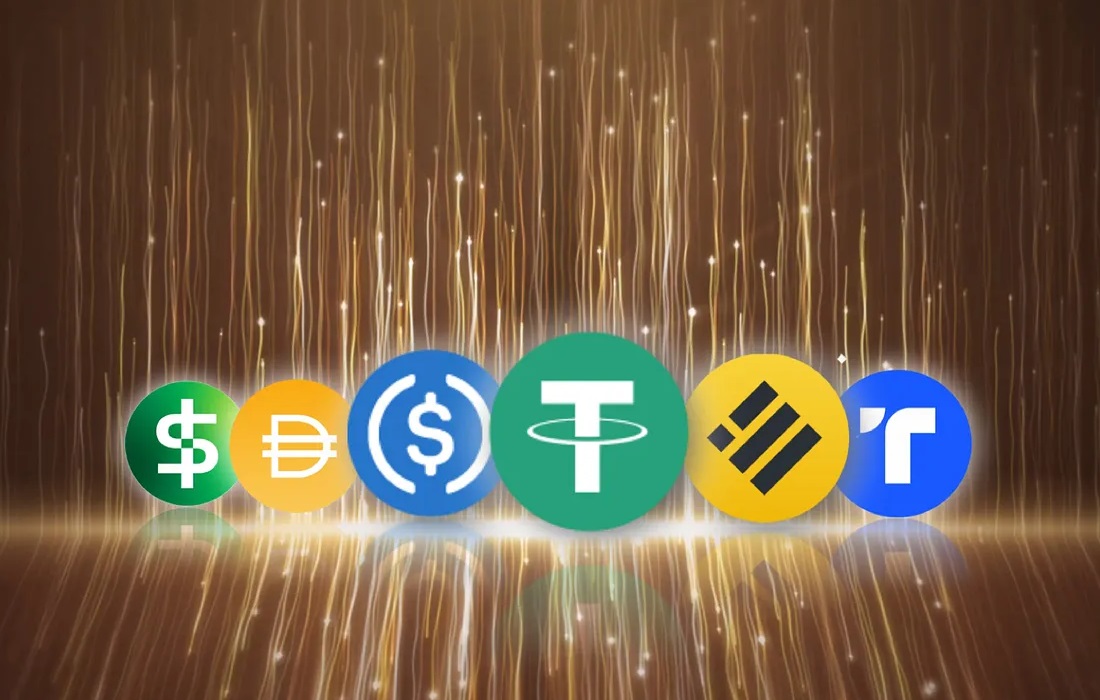
Background, Application and Growth Potential of Stablecoin
Note: This article summarizes material provided by the Federal Reserve.
Stablecoin is a type of cryptocurrency that is backed or pegged to another asset of value, with most stablecoins currently pegged to the US dollar. This technology product plays a significant role in the crypto market and has experienced tremendous growth, with the total dollar value of stablecoins (USD-pegged) in circulation reaching nearly $130 billion in 2021. However, along with this growth, concerns regarding peg stability, consumer security, anti-money laundering law enforcement, and effectiveness in payments have emerged as key issues facing stablecoins. To better understand stablecoin technology, this article will cover the background of stablecoins, their current applications, and their growth potential.
Background of Stablecoin
A stablecoin is a type of cryptocurrency that is designed to maintain a fixed exchange rate to another asset of value. It operates on distributed ledger technology (DLT), typically on blockchain technology. Stablecoins can be pegged to various assets, such as gold, fiat money, or other cryptocurrencies. They are often used for exchanging or merging with other digital assets.
Stablecoins differ from traditional digital currencies, such as money in a bank account, in several ways. For example, stablecoins are secured with cryptography, which enables near-instant transactions and eliminates the need for intermediaries. Additionally, stablecoins are built on top of DLT standards, which allows users to create financial services on top of the technology.
Types of stablecoins
There are various types of stablecoins with different definitions, and the current applications and legal perspectives described in this article only cover a portion of the potential applications of stablecoin technology.
Public reserved-backed stablecoins

Photo by Kenny Eliason on Unsplash
Most current public stablecoins are backed by cash equivalent reserves, such as bank deposits, bonds, and commercial drafts. Reserve-backed stablecoins are issued by intermediaries that act as custodians of collateralized assets and provide security for the exchange of stablecoins for dollars or other fiat currencies. However, the full collateralization and stability of some public reserve-backed stablecoins, such as Tether, are still in question. Popular public stablecoins backed by dollars include USD Coin, Binance USD, TrueUSD, and Paxos Dollar.
Public algorithmic stablecoins

Photo by Mariia Shalabaieva on Unsplash
The remaining stablecoins operating on the public blockchain are algorithmic stablecoins, which stabilize their value using a system of smart contracts on the public blockchain. Control of these smart contracts is based on governance tokens, which are special tokens used to vote on decisions regarding the operation and development of a public blockchain. Governance token holders can receive future cash flows from the stablecoin’s application.
Algorithmic stablecoins typically use two mechanisms: guaranteed assets (collateralized) and fixed exchange rates through algorithms (algorithmic peg). Collateralized stablecoins are created when users transfer a volatile cryptocurrency into the smart contract protocol and receive a stablecoin loan with a collateralized ratio greater than 100%. The algorithmic peg mechanism uses an automated smart contract to protect the peg by buying and selling stablecoins with an associated governance token. However, this mechanism can lead to instability or flaws in the design and result in de-pegging, when the token no longer holds the rate established with another asset. Currently, there are algorithmic stablecoins that use a combination of the two mechanisms, such as the public stablecoin IRON.
Institutional stablecoins

Photo by CHUTTERSNAP on Unsplash
Reserve-backed stablecoins are also being used by financial institutions on private DLTs to provide efficiency in wholesale transactions, and these are known as “tokenized deposits”. One good example is JPM Coin, which is known to be used by JP Morgan for intraday repo settlements (selling an asset to someone and agreeing to repurchase it at a pre-fixed price in the future) and internal liquidity management. Reserve-backed stablecoins operate on a private blockchain, similar to currency trading services provided by companies such as PayPal or Venmo. However, the difference is that stablecoins are used on a private DLT, whereas PayPal or Venmo use a centralized database.
Current Applications and Growth Potential

Photo by Shubham Dhage on Unsplash
Various types of stablecoins are being driven by current usage patterns. One of the most important uses is to trade cryptocurrencies on the public blockchain. The use of stablecoins makes it possible for users to complete transactions almost instantaneously and at any time, and users do not need to depend on systems other than the DLT payment system. Because of this nature, coupled with low fees, using stablecoins to conduct cross-border transactions is more efficient than traditional methods. Corporations also use their own stablecoins to manage liquidity internally and facilitate wholesale transactions. Participation in cryptocurrency-related markets and services in decentralized finance (defi) also utilizes stablecoins.
Growth Potential
The secure and programmatic nature of stablecoins not only supports current uses but also has the potential to drive innovation beyond them. Examples of this include creating a more inclusive payment and trading system, developing crypto-financial markets, and facilitating small transactions that enable the development of technology such as Web 3.0.
An inclusive financial and payment system
The inclusion of a financial system means that everyone has the right to access financial products and services at a reasonable price. By facilitating fast and low-cost transactions, stablecoins have the potential to drive growth and innovation in payment systems, which is particularly crucial for cross-border transactions that are typically time-consuming and expensive. With stablecoins as the foundation, a financial system can become more inclusive by supporting the development of DeFi. Currently, DeFi only supports loans, cryptocurrency exchanges, or NFTs, and it faces various challenges, such as consumer security and frequent hacks. As DeFi merges with financial markets and matures, it will foster a more inclusive financial system and attract consumers to stablecoins.
Crypto financial market
The conversion of financial securities to crypto on DLT and exchanging them for stablecoins has made stablecoins an important component of the crypto-finance market. Tokenization can facilitate DVP transfers, lower transaction costs, increase liquidity, speed up payments, and provide transparency, while reducing counterparty risks and other barriers to market entry. Assets like real estate can benefit from tokenization by having split ownership, making it easier for investors to invest, and making the real estate pricing process more transparent. For payment-for-payment (PvP) transactions, tokenization can make transactions almost instantaneous, instead of relying on the T+2 framework, which typically takes two days to complete. The tokenization of financial markets has the potential to attract more stablecoin users.
Future innovations
Innovative technologies of the future will likely rely on stablecoins to support their initiatives, such as Web 3.0. This technology will enable decentralized networks and could potentially transform the revenue streams of internet services and communication platforms. Instead of earning revenue from advertising and selling user data, platforms will be able to earn revenue from small transactions supported by an efficient online payment system. For instance, a streaming platform could be powered by small stablecoin payments from the service rather than earning revenue from traditional methods.
In conclusion, while stablecoins are currently primarily used for cryptocurrency exchange, PvP payments, and DeFi, they have the potential to further develop and support future technologies as mentioned above.
Sources
Liao, Gordon Y. and John Caramichael (2022). “Stablecoins: Growth Potential and Impact on Banking,” International Finance Discussion Papers 1334. Washington: Board of Governors of the Federal Reserve System, https://doi.org/10.17016/IFDP.2022.1334.



